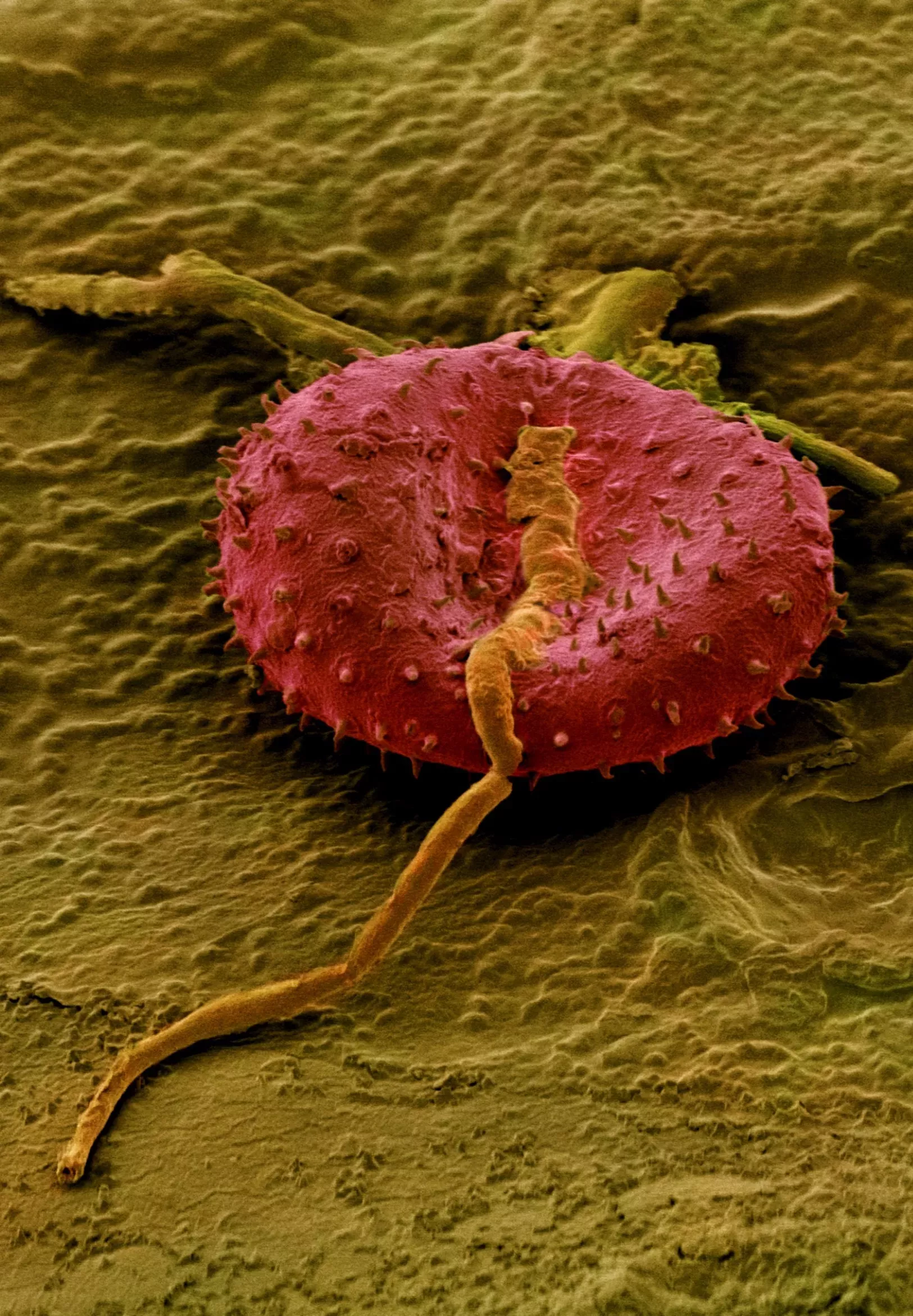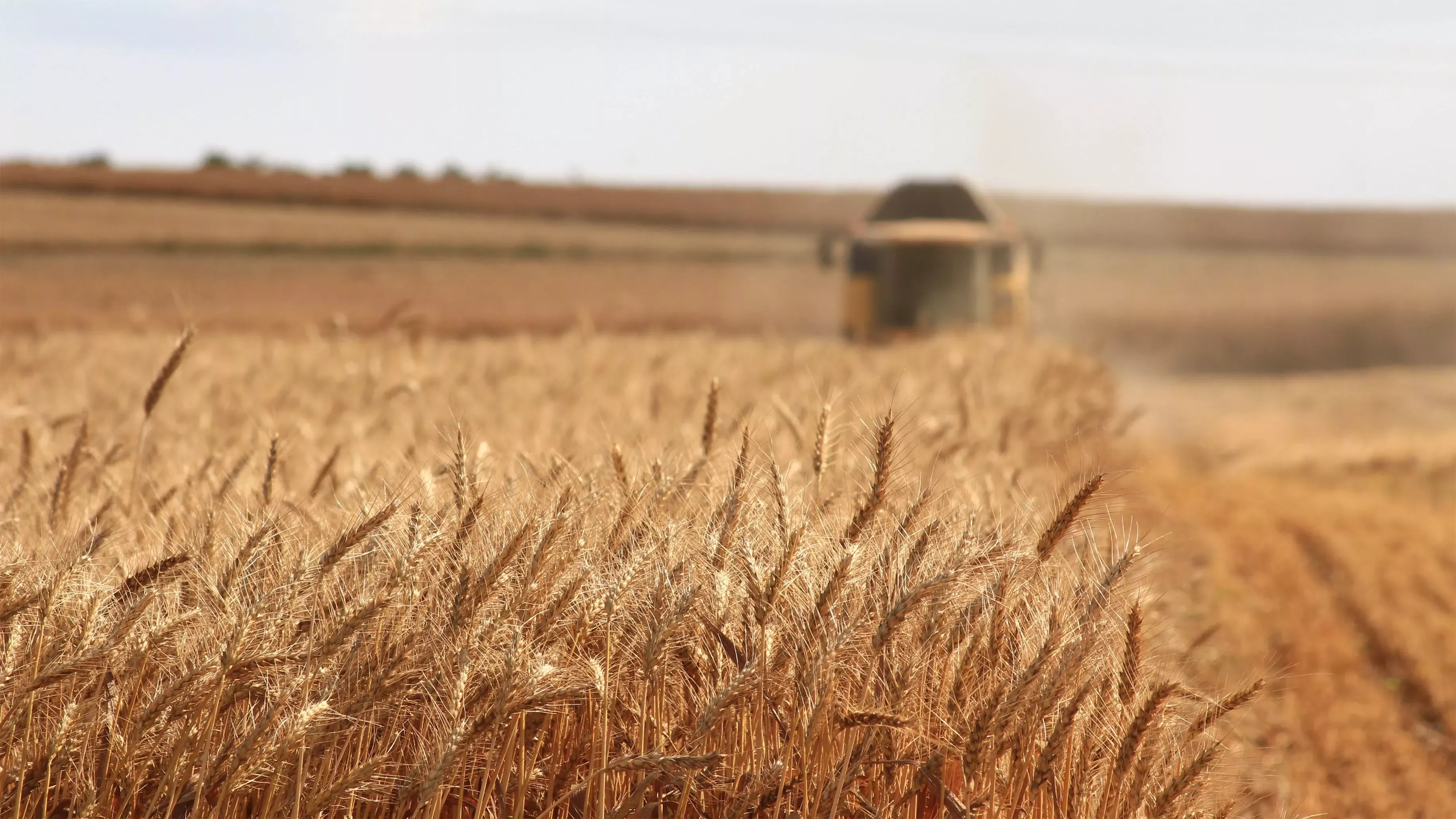30 September 2020
Why do some plants cause allergies?
From hay fever to food allergies, we look at why some plants cause allergic reactions.

Plants and fungi make human life possible, providing us with food, medicine and shelter.
But the natural world is not always our friend. Some plants and fungi can make our lives more difficult, and can even be dangerous for our health.
But what do they contain that cause allergic reactions? We take a look at the common allergens in every day life that cause can cause harm, and why.
Pollen
Hay fever is an allergy to pollen, and is one of the most common allergies in the UK affecting up to 30% of adults and 40% of children.
What is pollen?
Pollen is how plants reproduce. It's a fine powdery substance produced by the male part of the flower.
It carries the male gametes (reproductive cells) of seed plants, and is used to transport male DNA to female parts of flowers.
Some plants rely on wind and water to transport pollen, others reproduce through animal pollination by bees and insects.
Hay fever is when you experience an allergic reaction to pollen particles from grass, trees and weeds. The particles float in the air and get into our lungs through the nose and mouth.
Some peoples' immune systems can mistakenly treat pollen as a dangerous invader. They release antibodies to attack the pollen particles, and produce a chemical called histamine.
Histamine is what causes allergy symptoms like watery eyes, sore throats, coughing and a runny nose.
Symptoms are usually worse from March to September in the UK, as this is when the pollen count (the amount of pollen in a cubic metre of air) is at its highest.


Mould
Some mould can be really useful for humans, and it's what we use to make meat substitutes and other foods.
But mould inside our homes is often not desirable, from the blue spots on bread that's gone out of date to annoying black patches in your bathroom. And for some people, it can cause allergies.
Mould is a microscopic fungus, that will grow in places with lots of moisture, such as in bathrooms or where there are leaks. In nature, mould helps decompose plant and animal matter.
Moulds release microscopic spores into the air, which enable them to grow and spread. Like a seed, they drift until finding a surface with the ideal water and nutrient requirements.
It is these spores that can create an allergic reaction in humans.
When some people breathe the spores in, the immune system can overreact. This can cause sneezing, wheezing, watery eyes, a runny nose and in some cases more serious respiratory problems.
Always consult a doctor if you have any of the symptoms or think mould is impacting your health.
Wheat
Wheat is a grain and is used to make many familiar foods. From bread, to pasta, to biscuits and cakes, many of us eat it every day without thinking much about it.
Wheat allergies develop when the immune system becomes sensitive to wheat.
The body produces antibodies to proteins found in the grain, which can result in symptoms including rashes, stomach aches and headaches.
Although not an allergy, coeliac disease is another well known condition where people have an adverse reaction to wheat. When they eat it, their bodies produce antibodies to a specific protein called gluten which is found in wheat, barley and rye.
There is no cure for wheat allergies or coeliac disease, but a gluten-free diet helps people manage their symptoms.


Peanuts, nuts and seeds
Nuts are one of the most common foods that people can be allergic to. Seeds can also cause allergies, the most common being an allergy to sesame seeds.
Peanuts, although not technically a nut (they are classed as legumes), are also a common allergen. Many people who are allergic to them are allergic to at least one tree nut.
Some people are allergic because their immune systems falsely believe proteins in nuts and seeds are harmful.
This causes the immune system to release chemicals as your body prepares to fight off the invader. These chemicals, which include histamine, cause an allergic reaction.
Sometimes allergies are so severe that even skin contact with nuts, or inhaling nut particles, can cause a reaction.
Symptoms can range from a mild runny nose to the life threatening symptoms of anaphylaxis, which include throat swelling, shortness of breath, and shock.
In 2018, the tragic case of Natasha Ednan-Laperouse, who died from an allergic reaction to sesame seeds after eating a baguette with trace elements of the plant, brought the impact of severe allergies into the spotlight.
Following her death, Kew scientists analysed samples from her gut to confirm if sesame was present in her system. This evidence was later used in court.
Her death led to a national debate about food labelling laws. The introduction of Natasha's Law in 2019 helps to protect allergy sufferers by requiring food businesses to include a full list of ingredients on pre-packaged foods.
Find out more about this incident, and how plant science can give us a better understanding of allergies, in our brand new podcast Unearthed: Mysteries from an unseen world.
Always consult your doctor for any concerns you have around a reaction to food.




